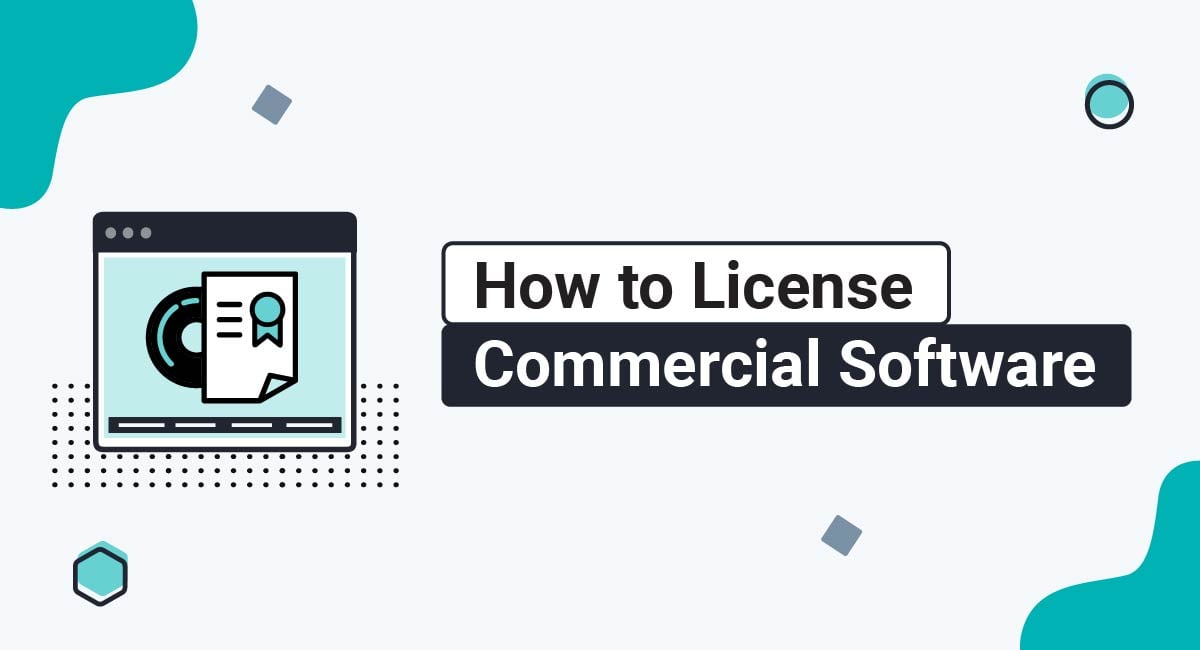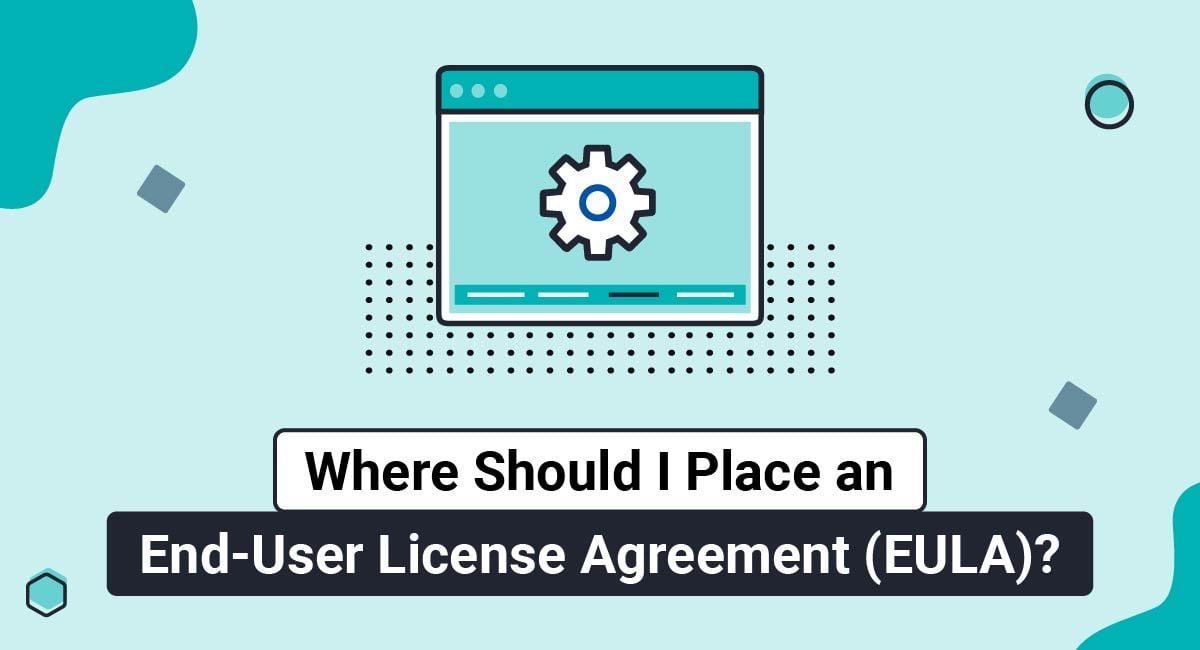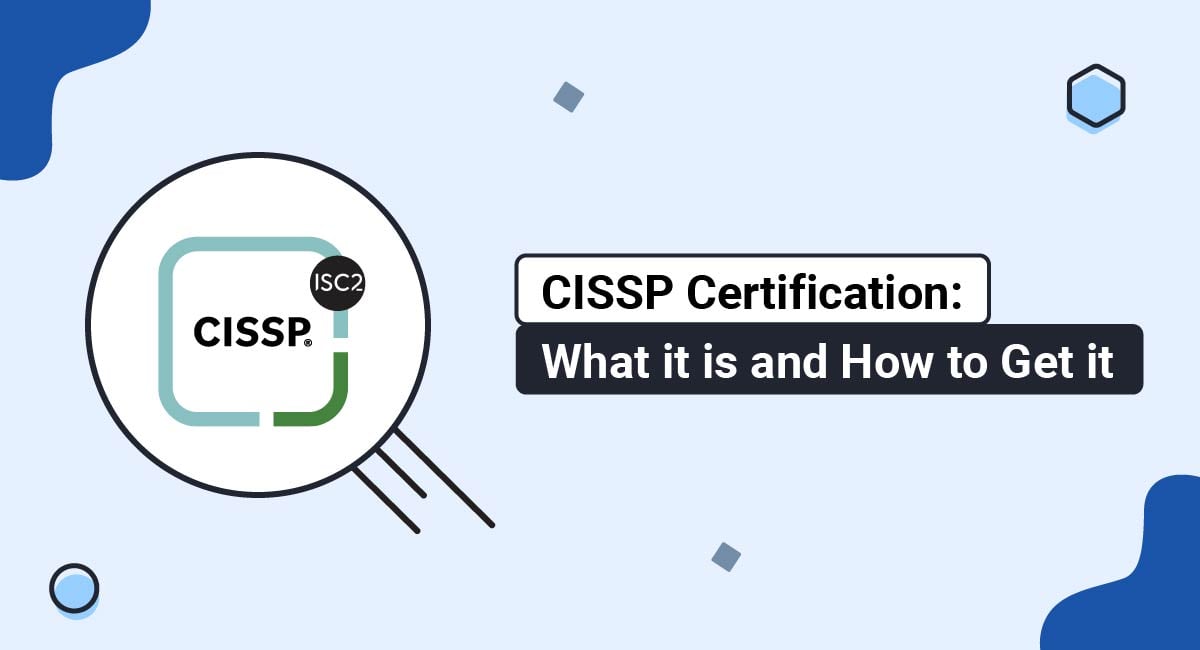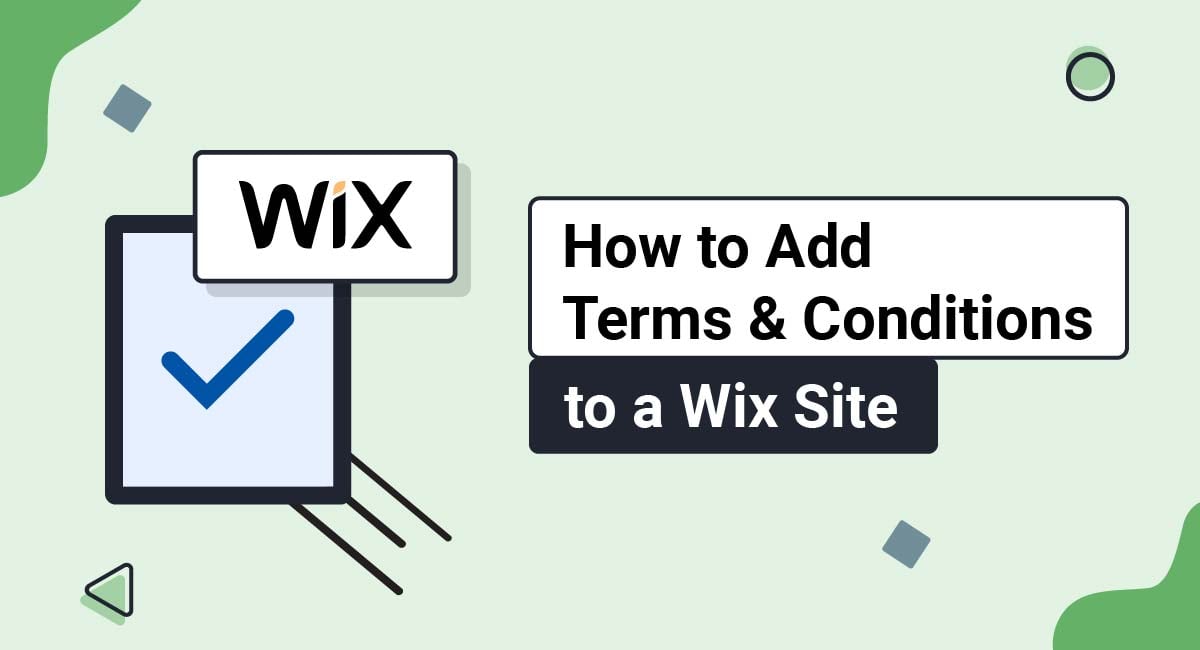If you are a software developer, then it's crucial that you take steps to protect your software before you allow users to access or benefit from your app. The most effective way to control access to your software, and protect your intellectual property (IP), is through software licensing.
Below, we explain what a software license is and how to go about licensing your commercial software product.
Our EULA Generator makes it easy to create an EULA. Just follow these steps:
-
At Step 1, select the Desktop app option and click "Next step":
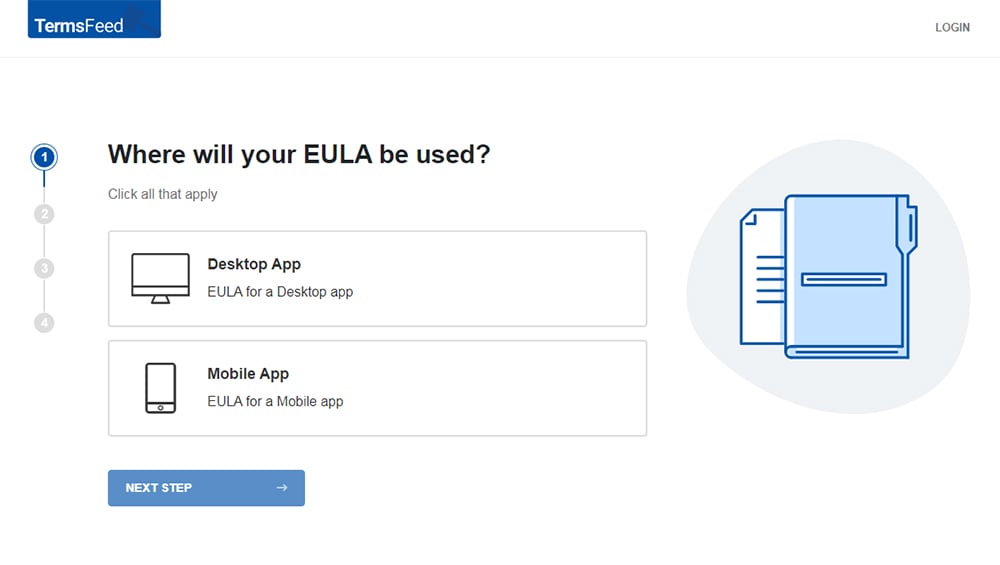
-
Answer some questions about your app.
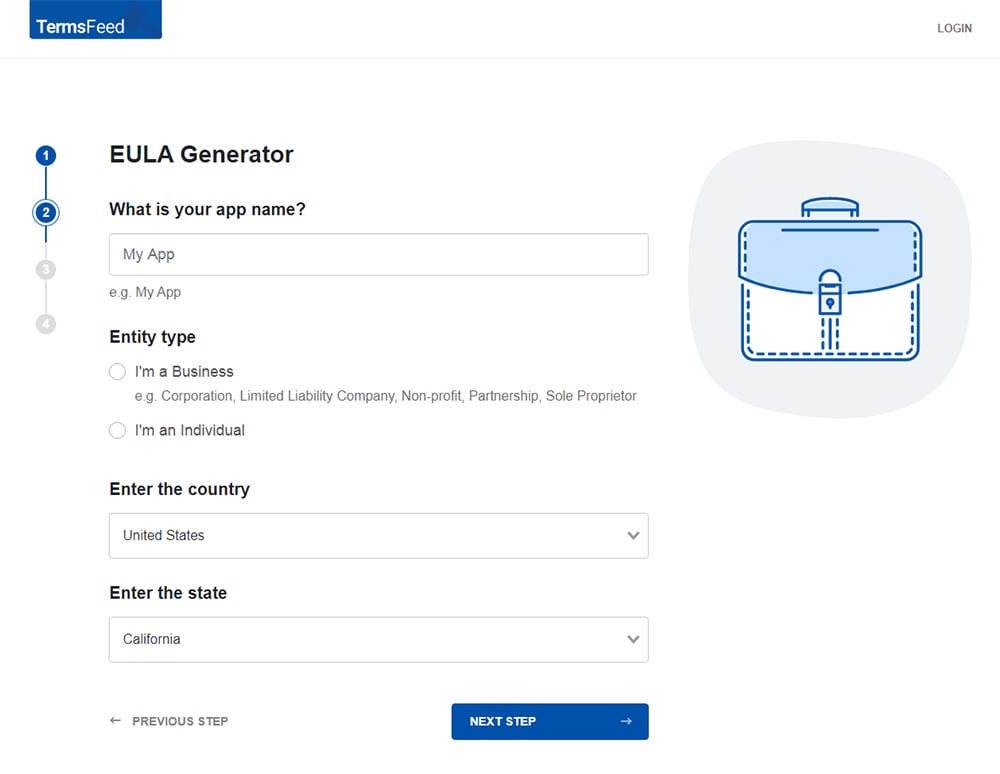
-
Answer some questions about your business.
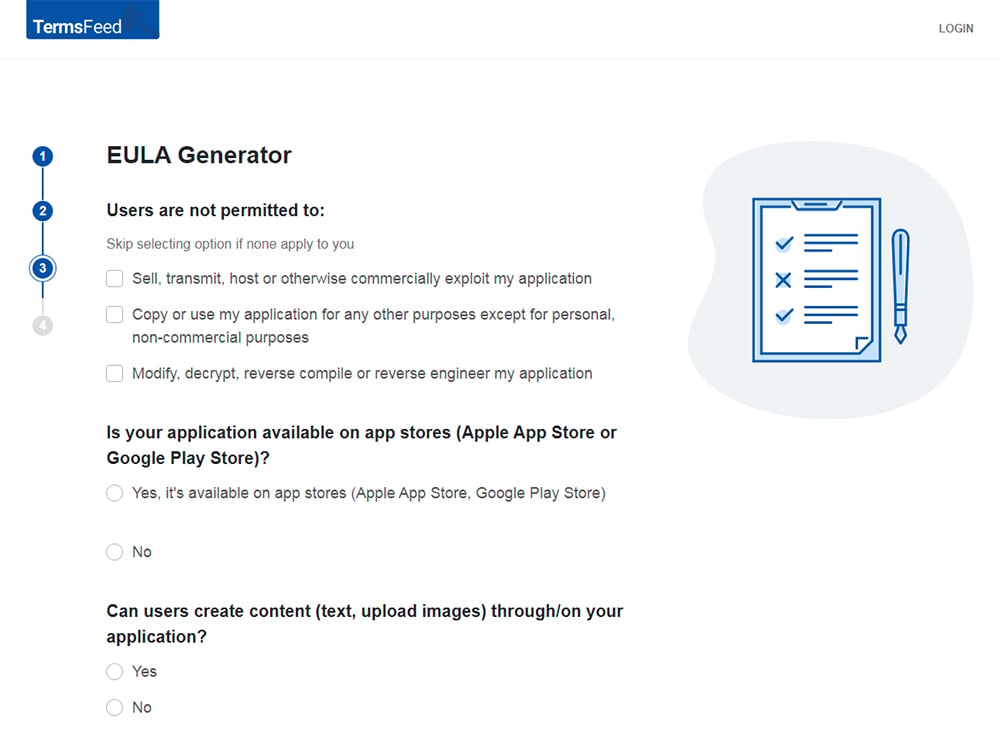
-
Enter the email address where you'd like to receive the EULA document and click "Generate."
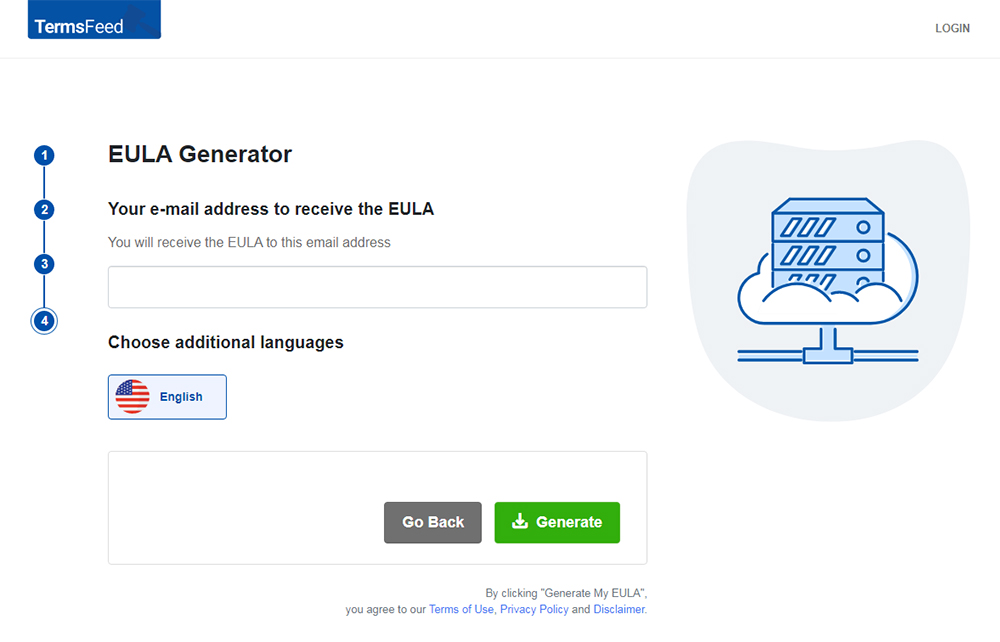
You'll be able to instantly access and download your new EULA.
- 1. What is Commercial Software Licensing?
- 1.1. What is a Commercial Software License?
- 1.2. Why are Software Licenses and Licensing Agreements Necessary?
- 2. Types of Commercial Software Licenses
- 2.1. Floating Licenses
- 2.2. Subscription Licenses
- 2.3. Perpetual Licenses
- 2.4. Which Commercial License Type is Best for You?
- 3. Are Commercial Software Licensing Agreements Legally Binding?
- 4. Commercial License vs Open Source License
- 5. How to License Commercial Software
- 5.1. Choose a License Model
- 5.2. Choose a Deployment Method
- 5.3. Draft Your License Agreement
- 5.3.1. Granting of a Commercial License
- 5.3.2. Intellectual Property
- 5.3.3. Authorized Use
- 5.3.4. Limitations and Restrictions on Use
- 5.3.5. Fees and Payments
- 5.3.6. Termination of the Agreement
- 5.3.7. Warranties, Disclaimers and Limitations of Liability
- 5.3.8. Personal Data/Privacy Policy
- 5.3.9. Updates and Modifications to the Agreement
- 6. Where to Display Your Commercial License Agreement?
- 7. How Do You Obtain Consent to Your Commercial License Agreement?
- 8. Summary
What is Commercial Software Licensing?
Commercial software licensing is a framework, or mechanism, for giving users specific, limited access to software. In other words, it's a way for software developers to let people use their software without giving away their ownership rights.
For example, the classic way to license commercial software is through a license key (or recently through subscriptions). When a user purchases the software license, they will obtain a license key. This is a unique combination of numbers and letters which they must input before they can use the software. This helps to prevent unauthorized access to the software product.
What is a Commercial Software License?
A commercial software license is a legal agreement that sets out what rights the user has to use the software, what rules the user must follow in order to retain those rights of access, and what rights the developer has if the user breaks those rules.
This is commonly known as an End-User License Agreement (EULA). We'll cover how these agreements work in more detail below, but for now, just bear in mind that:
- Software licensing is the process for allowing others to use your software in a limited, non-ownership capacity.
- The software license is the contract, or agreement, that makes such an arrangement possible.
Why are Software Licenses and Licensing Agreements Necessary?
As a developer, there are a few key reasons why you should license software and protect it via a licensing agreement:
- Licensing software enables developers to profit from their skills, and the codes they develop.
- If you license the software correctly, you can ensure that only people who pay for your software can use it, helping you to reduce revenue “leaks” and maximize profits.
- The licensing process allows developers to protect their intellectual property rights and benefit from copyright laws.
- Licensing Agreements ensure that developers retain full control over their software.
- The Licensing Agreement, if drafted correctly, protects developers by limiting liability for things that go wrong.
Types of Commercial Software Licenses
There are various ways a developer can license software. However, they typically fall into one of three models: floating, subscription, and perpetual licenses.
Floating Licenses
Floating licenses enable a group of authorized users, such as an office department, to access software at the same time, or from the same account. It means the authorized user doesn't need to pay for multiple licenses.
Subscription Licenses
A subscription license means the named user pays a recurring weekly, monthly, or annual fee to use the software. In other words, they have access while they continue to be a subscriber.
Perpetual Licenses
A perpetual license gives (usually just one named) user indefinite access to the software in exchange for a fee. It could be a higher initial fee than a subscription model, although it may work out to be cheaper for the user long-term.
Which Commercial License Type is Best for You?
How do you know which type of software license model is right for you? Ultimately, there are two points you should consider:
- What rights you are prepared to grant the user
- Your overall commercial and business goals
Are Commercial Software Licensing Agreements Legally Binding?
A software licensing agreement is a legally binding contract between end users and software developers. If drafted correctly, it's enforceable by both parties. This means that either party can rely on the agreement should an issue arise, or even if there's a need for litigation.
That's why it's so crucial to carefully consider what rights you are prepared to give the user and what steps you can take to protect your intellectual property before offering users access to your software.
Commercial License vs Open Source License
Open source software is software that the public is allowed to edit, use and alter to create customized versions of it. The public is allowed to collaborate with developers by accessing the source code.
The main difference between open source software and commercial software lies in the type of license granted and how the license can be used. For example, in commercial software, a limited license to use the software is granted. In open source software, a license to edit, alter and adapt the software is granted.
If you are looking to make money from your software, using a commercial license versus open source is the way to go.
How to License Commercial Software
Now that we're clear on how software licensing works, let's break down the main steps involved in licensing software, whichever type of license you plan on deploying.
Choose a License Model
Choose from one of the license models outlined above: floating, subscription, or perpetual. Consider what is most financially viable and determine a suitable price point for the license.
Choose a Deployment Method
Decide whether you will offer the software by cloud, meaning over the internet as a digital product, or in-house, meaning as physical software which must be installed manually.
The delivery, or deployment method depends entirely on your own commercial objectives and, to some extent, what is typical for your user base.
Draft Your License Agreement
Every software license agreement is unique. While covering every clause is beyond the scope of this article, to ensure that your agreement is legally enforceable, it should contain, at least, the following types of clauses:
- Granting of a license
- Intellectual property
- Authorized use
- Limitations/Restrictions on use
- Fees and payments
- Termination
- Warranties and disclaimers
- Personal data/Privacy Policy
- Updates and modifications
Here are some key tips for drafting a clear and legally enforceable licensing agreement:
- Use clear, simple language. Ambiguous or poorly worded agreements can lead to unnecessary disputes down the line.
- Keep it as short and succinct as possible, even if it’s for a technical audience. Overly complex agreements are difficult to manage and more likely to lead to disputes.
- Don’t forget to include limitation of liability and warranty clauses. Otherwise, there’s a risk you could be found liable for any losses the end user experiences after using your software.
- Consider using bold text, bullet points, or another formatting style to highlight the most crucial sections in your agreement. This can help to make the document more accessible, particularly for non-technical users.
The main issues with an unclear, ambiguous, or incomplete agreement is that it may not be enforceable. You could lose the benefits of, for example, IP protection or a disclaimer if your agreement is worded badly or you're missing key clauses. Always seek legal advice if you have concerns about drafting an EULA or about how to license software.
Here's a closer look at these key clauses and what information they should contain.
Granting of a Commercial License
Make it clear what type of license you are granting to users so they are aware of what they can expect, and what is expected of them.
If you don't specify the limitations of the rights you grant to the user, then there's a risk that they will claim to have more rights in the software than you intended. The user could attempt to modify, sell, share, or otherwise tamper with your software without your consent or knowledge.
Here's how Steam notes that a limited non-exclusive license is granted, and what rights this comes with, including using the license on a single hard drive under the user's custody, and limits on transferring it to other devices:
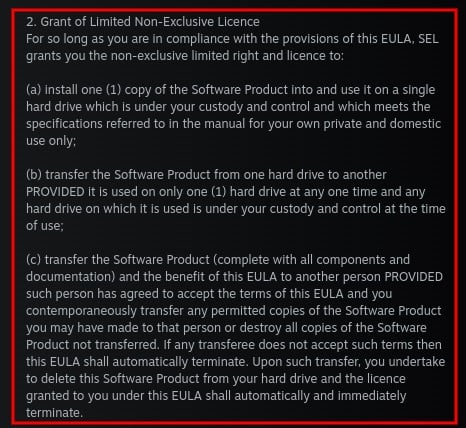
HP specifies precisely what rights the user has, without the clause(s) being too detailed or complex:

Intellectual Property
This clause is where you will state that you retain full copyright and intellectual property in the software (unless it is open sourced). You should also confirm that the product is for personal use only, or limited to a certain other use e.g. in a business capacity.
The whole point behind licensing software is to benefit from allowing users to work with your software without giving them any ownership rights. But if you fail to include intellectual property clauses, then you risk the user claiming ownership over the software, or distributing it without your consent.
Here's how HubSpot retains its IP rights in a clearly-labeled and highly detailed clause:
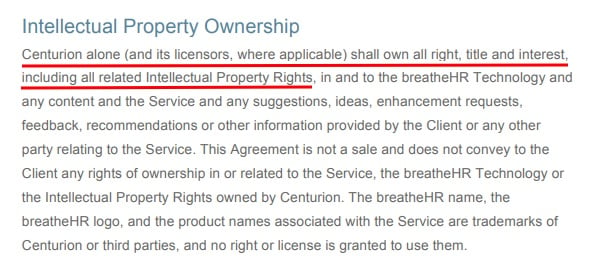
Authorized Use
Confirm who under your Agreement can use the software. Atlassian confirms that only authorized users can access the software, and it clearly defines what this means:
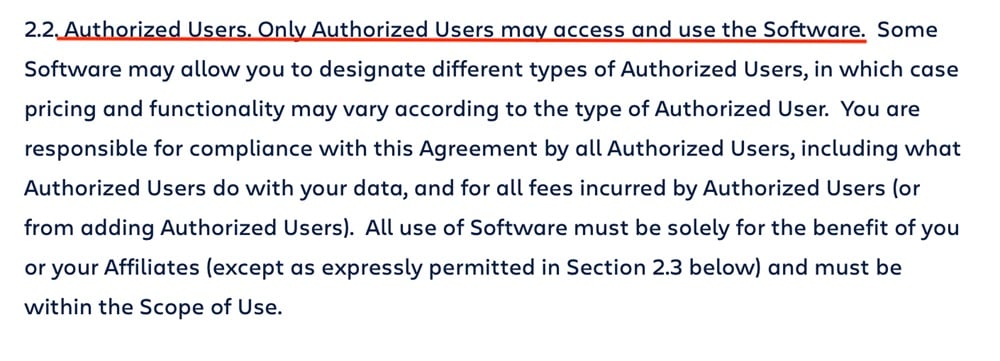
Be specific so you can take action, where necessary, against unauthorized use.
Limitations and Restrictions on Use
Inform users how they are not to use your software. Some common things to forbid include reverse engineering the software, distributing it themselves, or using it for illegal activities.
Here's how Steam lists out detailed restrictions. Note that this is only an excerpt of its Restrictions clause:
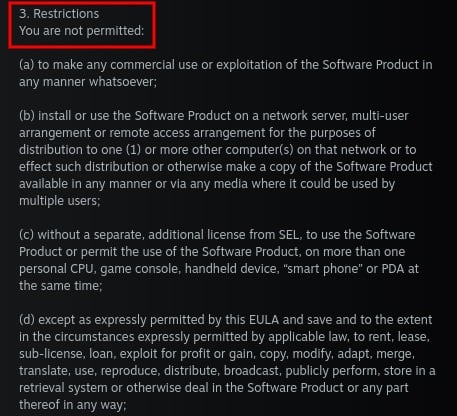
Fees and Payments
This clause is especially important if you offer multiple tiers of payments and subscriptions, such as different packages and price points.
Note that users are obligated to pay in accordance to your terms, as HubSpot does here:
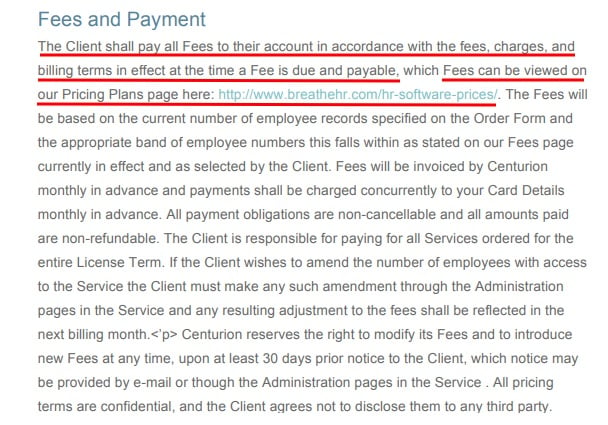
Note that the clause also retains the right to modify fees and notes how it will provide notice to users at least 30 days in advance for any fee changes.
Termination of the Agreement
Confirm what rights the user has and the conditions upon which you can terminate the agreement.
Here's how HubSpot notes that the agreement may end if the user materially breaches the contract:

Apple reserves the right to terminate the User Agreement if the user fails to comply with their obligations:

You should also reserve the right to terminate without cause, should you decide to restrict access to the software.
Warranties, Disclaimers and Limitations of Liability
Protect yourself from being held liable for unforeseen consequences, such as downtime, business disruption, a user's financial losses, or property damage. Limit your liability and do not make any guarantees, or warranties.
Here's a good example from HubSpot of how to structure such clauses:
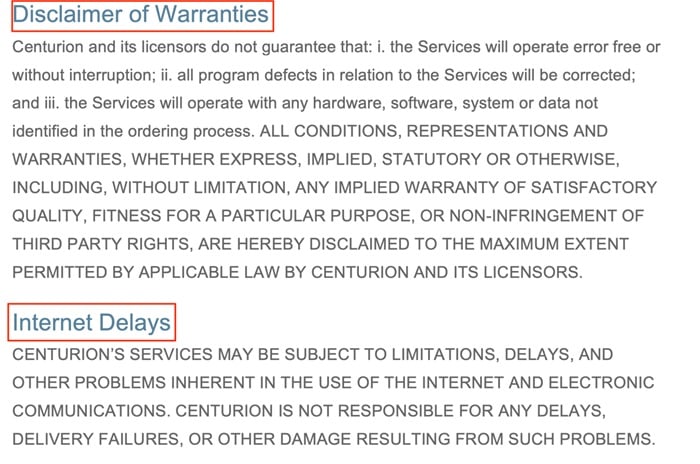
Don't forget to include a standard Limitation of Liability clause, which tend to be in all capital letters, like this one, also from HubSpot:
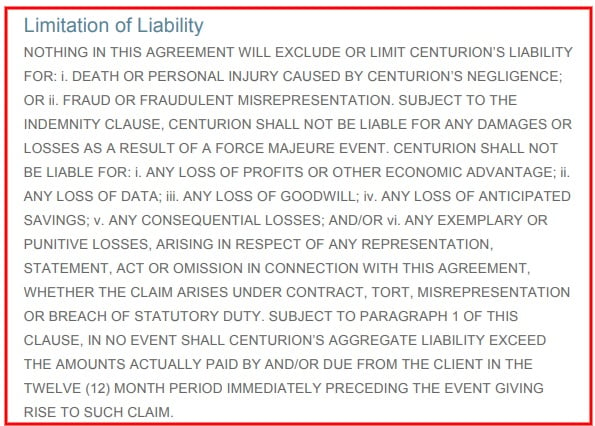
While it's impossible to contract out of all responsibilities, the extent of which depends on which country's laws apply, such clauses will help to protect your scope of responsibility.
Personal Data/Privacy Policy
If you collect personal data, meaning information that can identify someone, confirm this in your agreement. Provide a link to your full Privacy Policy here as well.
Minecraft notes that the Microsoft Privacy Policy applies to its services and includes a direct link:

Updates and Modifications to the Agreement
Confirm that you have the right to update, modify, or change the User Agreement at any time.
Here's how HubSpot does this, making it very clear that it retains such a right:

Where to Display Your Commercial License Agreement?
Once you've done the hard work of drafting the agreement, ensure that it's easy for users to find.
EA, for example, displays its User Agreement in the website footer along with other relevant legal agreement links:

It should also be displayed before the user transacts with you e.g. at the point of downloading the software or creating an account.
For example, before you can create a Steam account, the Subscriber Agreement is presented below for the user to read and review:
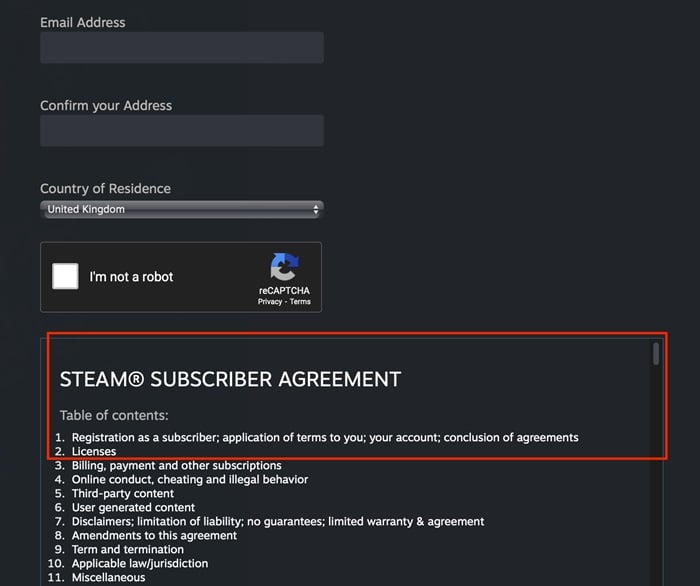
How Do You Obtain Consent to Your Commercial License Agreement?
Prior to selling or licensing your software, you not only need to provide a software licensing agreement, but you must ensure that the end user consented to this agreement before purchasing or downloading your software. Otherwise, your agreement may be unenforceable due to lack of consent.
The best way to obtain consent is to present the user with a prompt, such as a clickable checkbox or slider, which they must interact with before using the software.
Here's an example from Rockstar Games. Before creating an account to download software, the user must check a box confirming they agree to various terms:
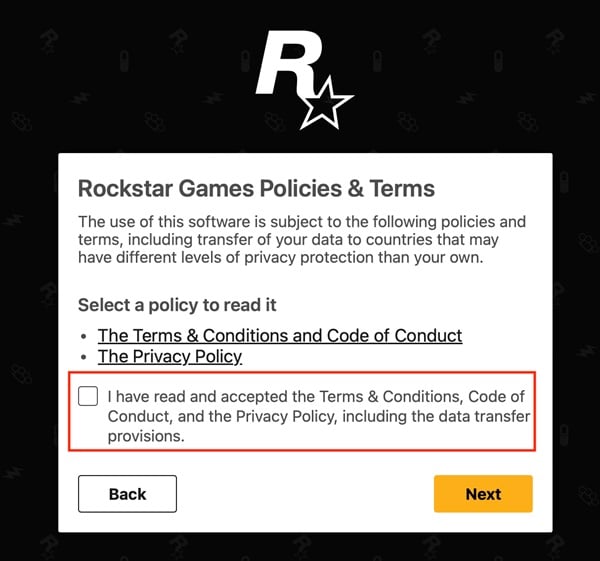
You cannot access Nintendo's software or create an account without providing express consent to various agreements:
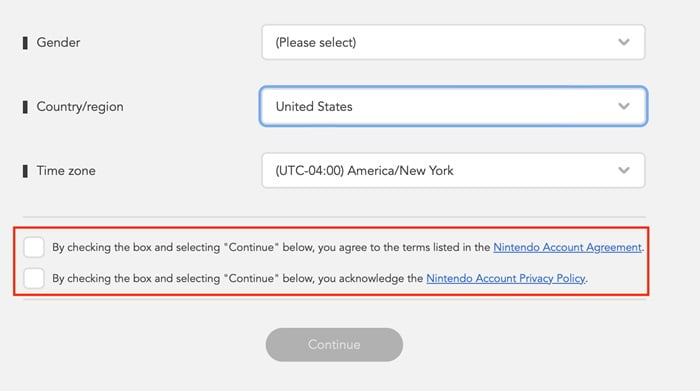
Summary
Commercial software licensing enables developers to profit from the software they develop by granting users access to the product on a limited basis. Creating a License Agreement for your software helps you maintain even more control.
The License Agreement will help ensure that the developer retains ownership rights, and limits the developer's liability for software issues. It also enables the developer to terminate the agreement without reason, or if the user violates the terms.
Users will also benefit by having clear information about what is expected from them, what they must not do, and how they can use the software they have a license to use.
Prior to allowing users access to your software, you should obtain consent to your License Agreement. Obtain consent by using a clickwrap technique, such as a checkbox. Make sure to display your License Agreement where it's easy to access at any time, such as in your website's footer.

Comprehensive compliance starts with a Privacy Policy.
Comply with the law with our agreements, policies, and consent banners. Everything is included.
